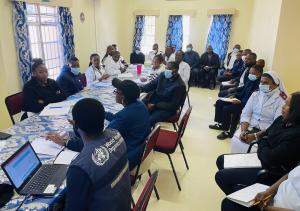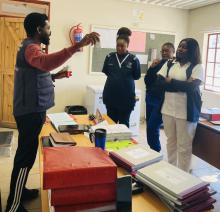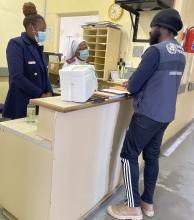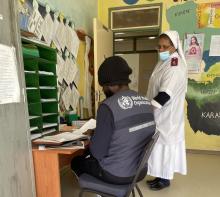Strengthening AFP/Polio surveillance through Integrated Support Supervision and Active Case Search
As the Global Polio Eradication Initiative (GPEI) moves closer to achieving the global goal of wild poliovirus (WPV) eradication, maintaining sensitive surveillance systems becomes increasingly critical. These systems are essential for confirming the absence of poliovirus circulation, particularly in the World Health Organization (WHO) African Region, where polio free countries need sustained high-quality surveillance to ensure they remain free of WPV and other poliovirus variants. Currently, poliovirus surveillance capable of detecting wild poliovirus (WPV), vaccine-derived poliovirus (VDPV), and Sabin-like viruses, relies on Acute Flaccid Paralysis (AFP) surveillance and environmental surveillance.
Namibia was certified polio free in October 2008 and has since maintained its status through routine immunization, national vaccination efforts, and AFP surveillance under the Integrated Disease Surveillance and Response (IDSR) framework. To enhance surveillance sensitivity, WHO supported the Ministry of Health and Social Services (MoHSS), in collaboration with local Town Councils, to establish environmental surveillance in border regions. Despite these efforts, the country remains at high risk for vaccine-derived polioviruses due to low AFP case detection in bordering districts, a key indicator of surveillance system sensitivity. Neighboring countries Angola and Zambia have reported confirmed cases of Vaccine Derived Poliovirus type 2 (VDPV2), with Angola recording a case as recently as 2025.
To uphold surveillance standards, WHO Namibia provided technical support to the MoHSS to conduct integrated supportive supervision and active case searches for AFP and other vaccine preventable diseases (VPDs) in the Kavango East region, which borders Angola. This initiative included visits to health facilities in Rundu and Nyangana Districts to actively review patient registers for missed cases, mentor healthcare workers, and conduct clinician sensitization meetings. These efforts aim to strengthen AFP case detection and reporting, a crucial measure for identifying poliovirus circulation and ensuring no potential outbreaks go undetected. Additionally, the environmental surveillance site at the Ndama sewage pond in Rundu District is performing well, achieving a 71.43% enterovirus detection rate, further supporting the country’s polio surveillance efforts.



